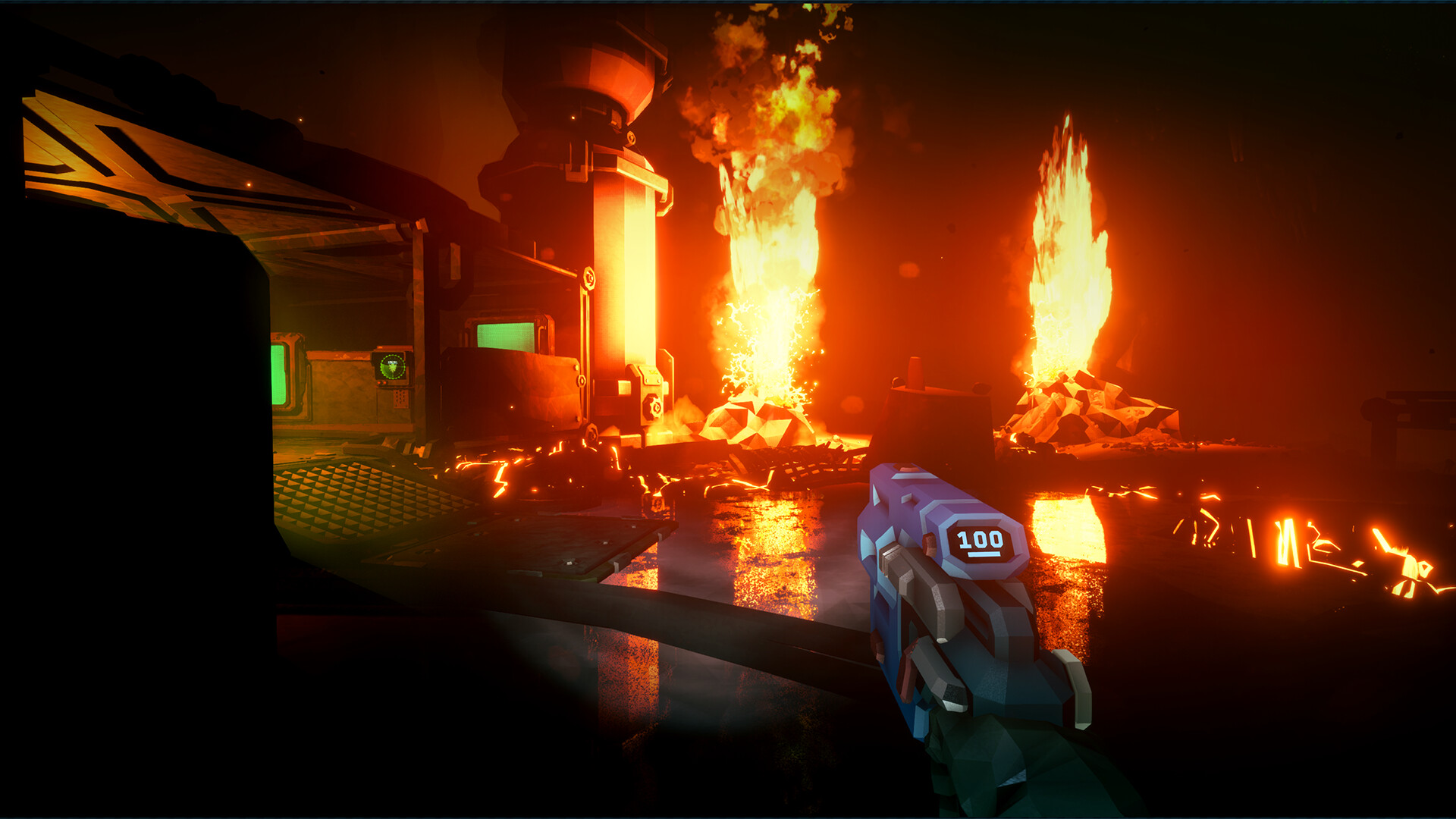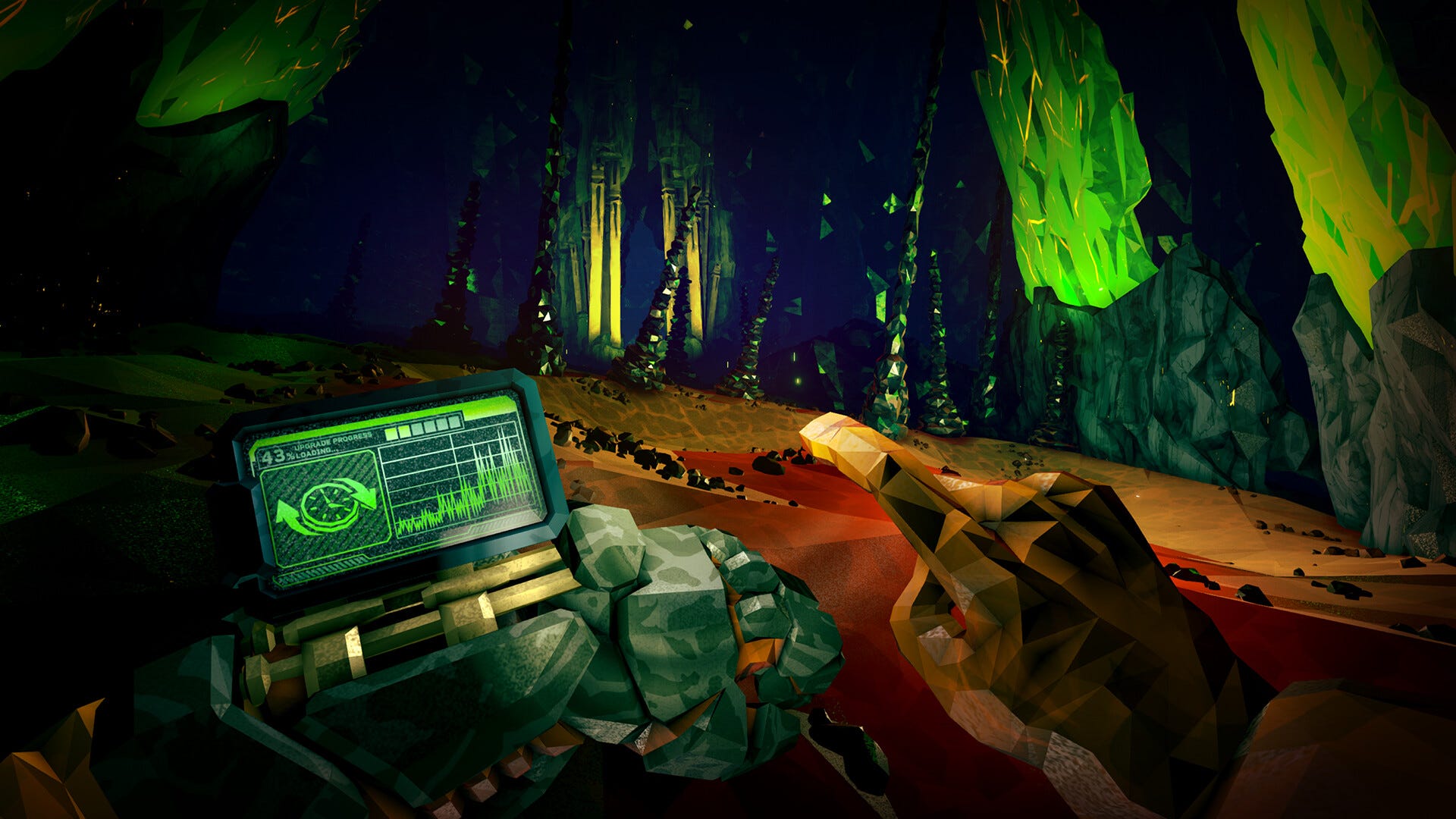Below Decks at Ghost Ship: Harvesting Sound

[h2]Hello Miners,
[/h2]
Here’s some more behind-the-scenes stuff for you. Everything here is a work in progress, so what you read here might change before Rogue Core comes out. But in any case, this is what we’ve been working on. :)
[h3]Recordings for Rogue Core
[/h3]It’s a rainy Tuesday in November, and Joachim is harvesting sound.
We’re on a field trip today, north of Copenhagen at the Technical University of Denmark. Christian Øelund, Senior Technical Artist at Ghost Ship Games, is a member of a glider hobby club that has their workshop on the university campus. He’s brought Ghost Ship’s sound designer Joachim Nyholm out to tinker with their tools and heavy machinery, and record a library of sound samples he can use for Rogue Core.
Joachim is here to explore, to collect samples and see how the equipment on site might help build out Rogue Core’s sonic landscape. It’s not about how any of these machines function; only what noises they can make.
These noises won’t be transferred one-for-one into Rogue Core. Instead, they’ll form the building blocks of new sound profiles: twisted, modulated and layered to create the creaks of unfamiliar machines, or alien howls.
We’re alone in the workshop. The concrete floor’s greasy sheen reflects the industrial lights overhead. Dusty glider wings are stacked on shelves along the walls. It’s silent here, save for the low hum of the ventilation system.
“This is a nice big hall, good acoustics here. Good thing I brought my death whistles,” Joachim says. He’s unpacking a bag full of sound recording equipment, which includes his small collection of 3D-printed Aztec death whistles.
He finds an old garden tractor in a corner and yanks on the spring-loaded gear shifter, which gives off a heavy thunk and a resonating twang. “Very nice. We can use this,” he says to himself.
The sound hunt is on.
 Joachim (right) records Christian (left) throwing sparks with an angle grinder.
Joachim (right) records Christian (left) throwing sparks with an angle grinder. Christian is an experienced machinist -- don't worry, we're not just playing with power tools.
[h3]A sonic scavenger hunt
[/h3]
Joachim flits around the machine shop, methodical and curious, surveying the machinery and tools at his disposal.
He’s wearing a battered set of studio headphones plugged into a MixPre 6 audio recorder strapped around his waist. He’s also got another handheld recorder in a holster, a seismic geophone and a directional shotgun mic on a pistol grip. Black AV cables drape across his limbs and torso, swinging at his ankles as he moves.
He and Christian start playing with an old hydraulic press. The machine’s got a small leak, and sprays out a puff of musty lubricant every time Christian works its levers. Joachim presses his microphone closer, getting greasy dew on its foam cover, so he can capture the metallic clunks and leaky squelch. His eyes widen in fascination. “This is fantastic.”
We move over to an industrial lathe, a Dutch-made Hembrug DR1. It’s a one-ton iron brute, older than anyone in the room. Joachim eyes it with a musician’s interest, as though this hulking machine was some fine instrument. He nudges his microphone into the machine’s maintenance panel, and asks Christian to start up the motor.
“Don’t get your cables or your arm caught in this thing, because it’ll eat both of them,” Christian warns. The lathe’s motor chugs into action, and Joachim records several cycles of it powering up, running at speed, and powering down.
I leave the room to check my phone. By the time I’m back, Christian and Joachim are setting up an arc welding rig. Christian hands a heavy welding mask to Joachim, and sets a handheld one on the table. “Maybe stand a bit farther away for this one, and don’t look directly at the torch. But I need you to watch in case anything around us sets on fire,” he says, pulling on a pair of heavy gloves.
Sparks pour onto the floor and the workshop walls glow blue, the entire room buzzing with the welding torch’s wicked crackle.
 Christian (right) does a bit of Tuesday afternoon welding. Joachim (left) observes good safety protocols.
Christian (right) does a bit of Tuesday afternoon welding. Joachim (left) observes good safety protocols.[h3]Not the sounds we know, but the sounds we expect
[/h3]
Sound design, especially in video games, isn’t necessarily about realism. Instead, it’s about designing to meet people’s expectations.
To take an example, think of unsheathing a sword. In real life, drawing a sword from a scabbard doesn’t make much noise at all. But when you see it in a movie or a game, your brain automatically expects the sharp schhing! sound effect. If that’s not there, it sounds wrong, like it’s missing something.
As Joachim explains, this same principle applies to most noises in a video game. Everything, from mining equipment to a pocket pistol, needs to sound more dramatic, more complex, more satisfying than its real life counterparts.
"A cool sound is often built up from a lot of different noises. When we’re designing for some complex machinery, for example, it’s rare that a real-life sound actually has all the elements you need,” Joachim says. “If we want a ‘full’ sound profile that’s got low, heavy notes, crisp detail and a bit of musicality, we need to find those noises in different places.”
It’s his job to fold in these extra layers of sonic depth.
Let's put this into action. Down below, there's a mockup for an extraction scoop machine in Rogue Core. To make this single machine's sound profile, Joachim used eight different recordings from the day’s field trip (plus a recording of a roller coaster), all modified and layered together.
First, here are the samples on their own, with some textures and twists applied:
[previewyoutube][/previewyoutube]
Now, here are the same samples, synchronized with this new machine.
See if you can hear how things like a filing cabinet, roller coaster, and garage door become part of this extraction scoop's sound profile.
[previewyoutube][/previewyoutube]
[h3]Shaping the sounds of Rogue Core
[/h3]
When we talk about sound design, it’s often a game’s soundtrack, voice acting or weapon effects that first come to mind. But every little sound effect plays a part in this orchestra, influencing how you move around, what you interact with, and how you feel as you play.
For a game like Rogue Core, even a common piece of mining machinery plays an important role.
“There’s talk of some horror elements in Rogue Core, so I want to make the machinery sound a bit rusty and neglected, somehow a little creepy,” Joachim says. “The one problem is, this workshop is full of tools people actually use, so they’re all in good condition. I want to find some rusty stuff, or figure out a way to make things sound more run down.”
Throughout the day, Joachim’s collected sounds from a welding torch, an industrial lathe, a garage door, scrap metal, a filing cabinet, a mechanical can crusher, a soda, an angle grinder, a band saw, a tube lamp, a garage door, the spring-loaded garage lock, a trash can, a compressed air hose, a box cutter, a pipe wrench, a little tractor, a hand drill, and a trailer winch. All told, he heads home with 4.9 gigabytes of raw audio, recorded just a few seconds at a time.
With the right modulations, twists, and layering, these everyday noises will become larger than life. Sounds you hear every day turn into machines and creatures you’ve never heard before, providing the essential element that makes a game immersive and engaging.
In that sense, sound design allows the familiar to become fantasy.

Do you have a suggestion for what you’d like to read about in the next Below Decks? Pop it in a comment below. Thanks for reading!

 Different sketches of the Field Blaster, which fires a wide energy barrier projectile.
Different sketches of the Field Blaster, which fires a wide energy barrier projectile. Two concepts for the precise, hard-hitting Charge Blaster.
Two concepts for the precise, hard-hitting Charge Blaster. More proposals for the Field Blaster.
More proposals for the Field Blaster. Various proposals for the electric Shock Blaster.
Various proposals for the electric Shock Blaster. 


